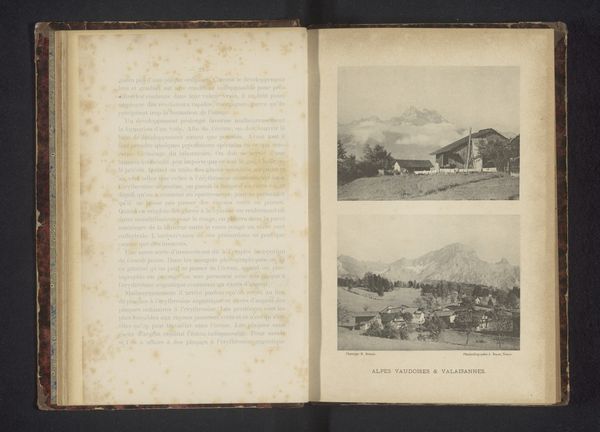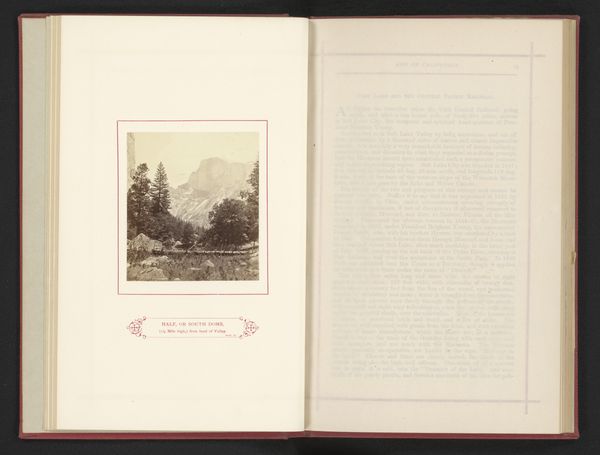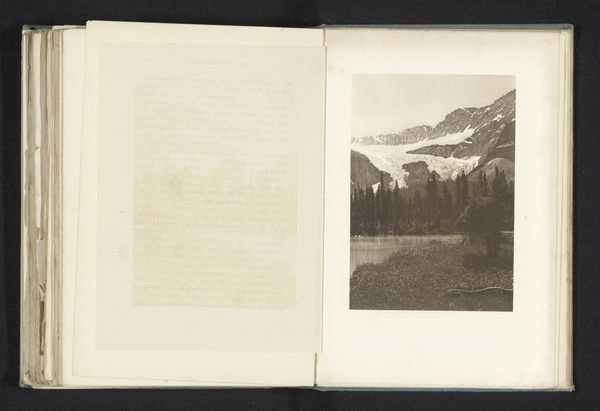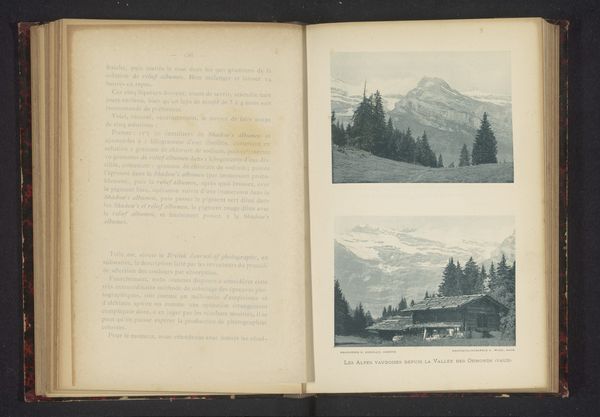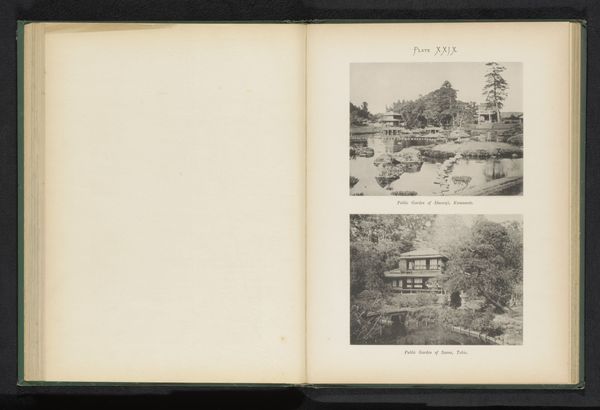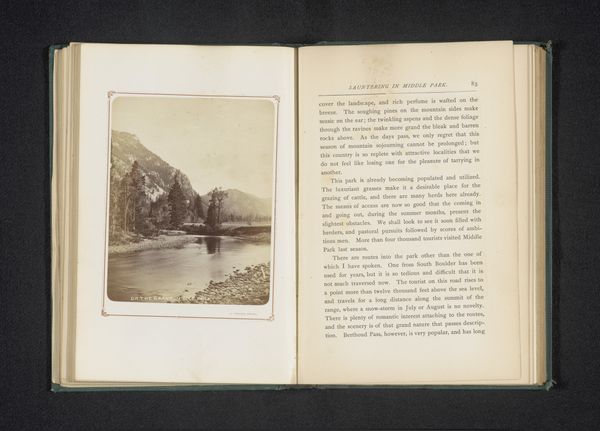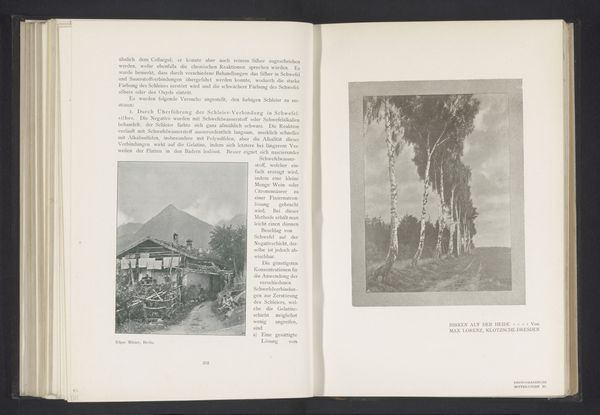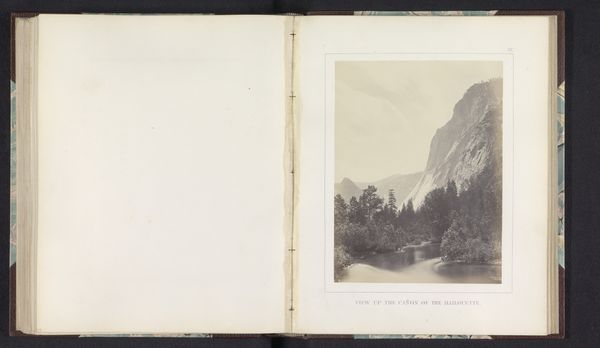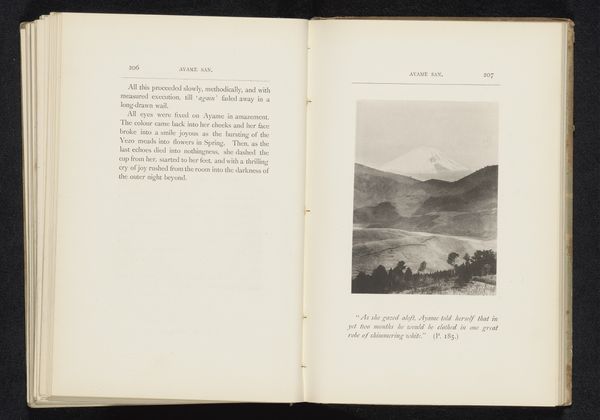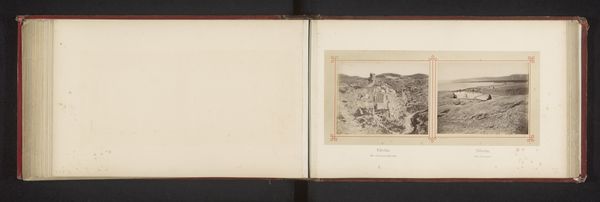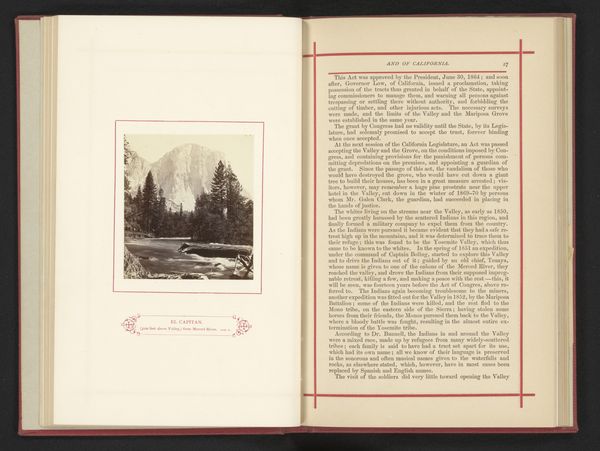
photography, gelatin-silver-print
#
asian-art
#
landscape
#
photography
#
gelatin-silver-print
Dimensions: height 178 mm, width 124 mm
Copyright: Rijks Museum: Open Domain
Curator: This is a fascinating gelatin-silver print by Hugues Krafft, titled "Straat in een dorp te Japan, met op de achtergrond een berg," which translates to "Street in a village in Japan, with a mountain in the background," dating back to before 1883. Editor: It’s… striking. Almost severe in its straight lines and sharp contrasts. The black and white processing adds a level of austerity. I'm immediately drawn to the almost repetitive shapes of the architecture in the village and how this geometry contrasts with the wild growth that encroaches it from the landscape Curator: Absolutely. It embodies the Japonisme movement that captivated the West at the time, a visual distillation of what Europe thought of Japanese landscapes, with the grand mountain always looming, promising sublime, religious revelation of nature. Thinkers as diverse as Nietzsche, Wilde, and Monet turned to Japanese art to transform European philosophical and artistic expression. What continuities and departures from the older style does this object communicate? Editor: Continuities are hard to tease out in this photograph removed from the immediate context of Japonisme in Europe; the labour of image-making always intervenes between source material and consumer! Look at the stark simplicity. The unadorned quality is a consequence of materials on hand and choices on display to capture the immediacy. It’s almost vernacular, capturing how this place materially *is*, and in what terms this existence is registered: by emphasizing an almost flattened sense of perspective through photography Curator: That material pragmatism certainly shaped its reception. But look closer; note the idealized, romantic framing of this ordinary village. This wasn’t just about materials or practicality; the visual vocabulary emphasizes a spiritual East, a break from industrial progress. Editor: I understand what you're seeing, though I question it—the straightness, and angularity feels so distinctly early photography, almost clinical and distanced. Any sense of "spirituality" it projects must have to grapple with the bare materiality required in early photography processes! Curator: A tension that makes this photo especially poignant, a window into intersecting gazes across time. Editor: I agree completely; both cultures shape this creation and force us to think more broadly, outside imposed ideological positions.
Comments
No comments
Be the first to comment and join the conversation on the ultimate creative platform.
